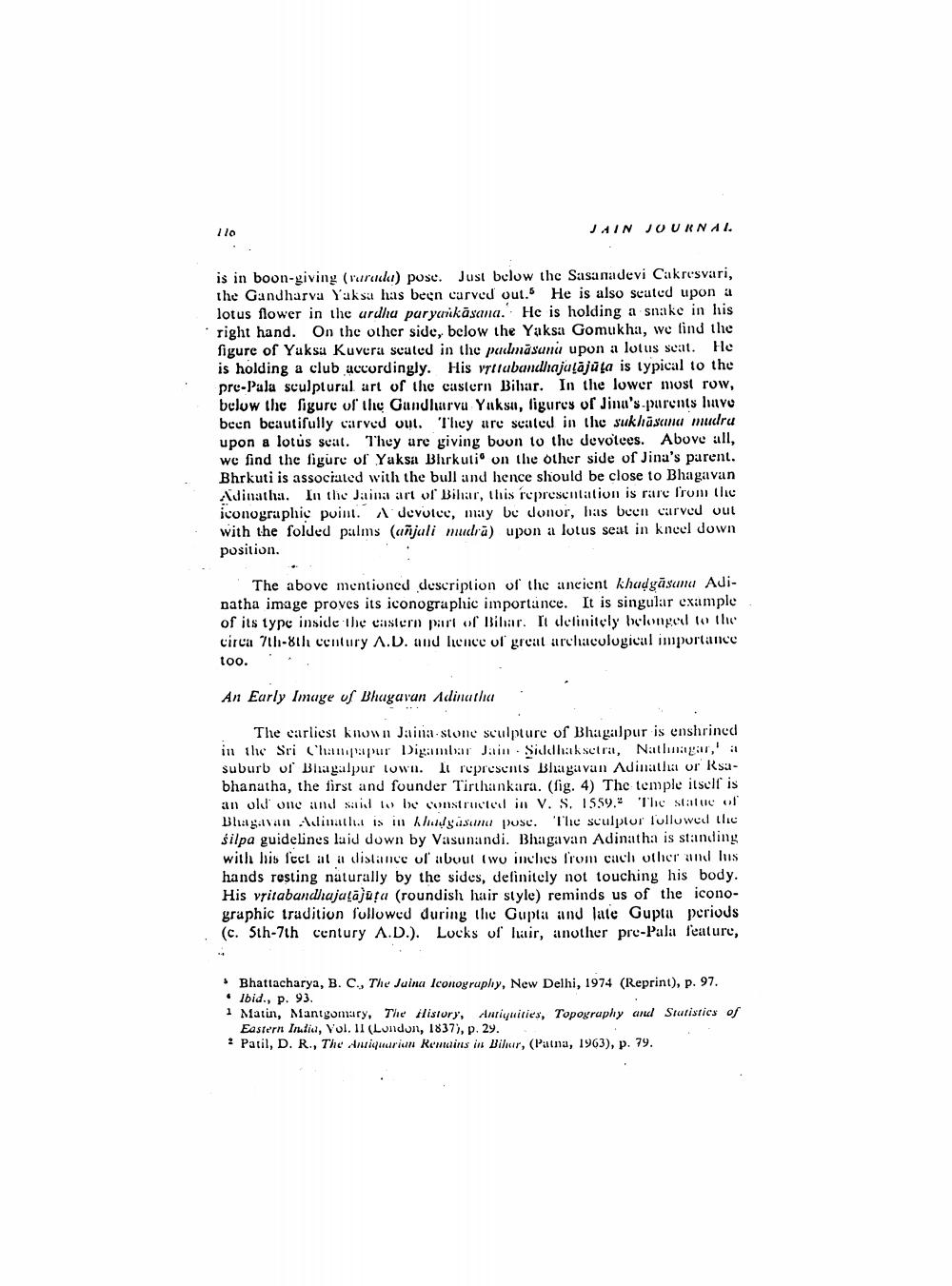Book Title: More Sculptures From Bhagalpur Author(s): Ajoy Sinha Publisher: Ajoy Sinha View full book textPage 7
________________ 110 JAIN JOURNAL is in boon-giving (varada) pose. Just below the Sasanadevi Cakresvari, the Gandharva Yaksa has been carved out. He is also seated upon a lotus flower in the ardha paryankāsana. He is holding a snake in his right hand. On the other side, below the Yaksa Gomukha, we find the figure of Yaksa Kuvera seated in the padmasana upon a lotus seat. He is holding a club accordingly. His vrttabandhajatajūta is typical to the pre-Pala sculptural art of the eastern Bihar. In the lower most row, below the figure of the Gandharva Yaksa, figures of Jina's parents have been beautifully carved out. They are seated in the sukhasana mudra upon a lotus seat. They are giving boon to the devotees. Above all, we find the figure of Yaksa Bhrkuti on the other side of Jina's parent. Bhrkuti is associated with the bull and hence should be close to Bhagavan Adinatha. In the Jaina art of Bihar, this representation is rare from the iconographic point. A devotee, may be donor, has been carved out with the folded palms (añjali mudra) upon a lotus seat in kneel down position. The above mentioned description of the ancient khaḍgāsana Adinatha image proves its iconographic importance. It is singular example of its type inside the eastern part of Bihar. It definitely belonged to the circa 7th-8th century A.D. and hence of great archaeological importance too. An Early Image of Bhagavan Adinatha The earliest known Jaina-stone sculpture of Bhagalpur is enshrined in the Sri Champapur Digambar Jain Siddhaksetra, Nathinagar,' a suburb of Bhagalpur town. It represents Bhagavan Adinatha or Rsabhanatha, the first and founder Tirthankara. (fig. 4) The temple itself is an old one and said to be constructed in V. S. 1559. The statue of Bhagavan Adinatha is in Khadgasana pose. The sculptor followed the silpa guidelines laid down by Vasunandi. Bhagavan Adinatha is standing with his feet at a distance of about two inches from each other and lus hands resting naturally by the sides, definitely not touching his body. His vritabandhajatajūta (roundish hair style) reminds us of the iconographic tradition followed during the Gupta and late Gupta periods (c. 5th-7th century A.D.). Locks of hair, another pre-Pala feature, ⚫ Bhattacharya, B. C., The Jaina Iconography, New Delhi, 1974 (Reprint), p. 97. Ibid., p. 93. 1 Matin, Mantgomary, The History, Antiquities, Topography and Statistics of Eastern India, Vol. II (London, 1837), p. 29. Patil, D. R., The Antiquarian Remains in Bihar, (Patna, 1963), p. 79.Page Navigation
1 ... 5 6 7 8
